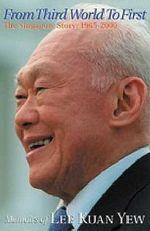You don't have to be a rocket scientist or President Scorer to be able to tell that the Sinkie gabrament and the SCM (state-controlled media) have been distorting Sink-a-pore's history.
A 13-year-old student's letter to the Forum, The Straits Times, March 4, 2015, page A25, debunks the popular but fabricated story that Sinkieland was a sleepy village pre-Raffles' time.
***************************************
Old Singapore not a sleepy village
Based on my research, Singapore was not a sleepy village before the arrival of Sir Stamford Raffles in 1819.
The oldest recorded map of Singapore, created by Johannes Theodore de Bry an dated 1607, depicts a naval battle in our waters between Dutch Vice-Admiral Jakob Pietersz Enkhuisen and Portuguese Captain Estevao Teixeira de Matos.
This shows that it was definitely not peaceful then.
Another bit of evidence would be the 14th-century gold armlets and rings--in East Javanese style--found at Fort Canning Hill, which prove there were probably Javanese traders who made stopovers here.
The 15th-century Malay Annals, which is the only available account of the history of the Malay Sultanate, claims Singapura was a thriving trading port under Sang Nila Utama.
Amid the SG50 celebrations, let us take time to appreciate how Singapore has come to prosper, and let us study its roots more.
Liyana Afiqah Modh Faizal, 13,
Secondary 1 student
A 13-year-old student's letter to the Forum, The Straits Times, March 4, 2015, page A25, debunks the popular but fabricated story that Sinkieland was a sleepy village pre-Raffles' time.
***************************************
Old Singapore not a sleepy village
Based on my research, Singapore was not a sleepy village before the arrival of Sir Stamford Raffles in 1819.
The oldest recorded map of Singapore, created by Johannes Theodore de Bry an dated 1607, depicts a naval battle in our waters between Dutch Vice-Admiral Jakob Pietersz Enkhuisen and Portuguese Captain Estevao Teixeira de Matos.
This shows that it was definitely not peaceful then.
Another bit of evidence would be the 14th-century gold armlets and rings--in East Javanese style--found at Fort Canning Hill, which prove there were probably Javanese traders who made stopovers here.
The 15th-century Malay Annals, which is the only available account of the history of the Malay Sultanate, claims Singapura was a thriving trading port under Sang Nila Utama.
Amid the SG50 celebrations, let us take time to appreciate how Singapore has come to prosper, and let us study its roots more.
Liyana Afiqah Modh Faizal, 13,
Secondary 1 student


